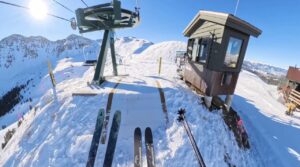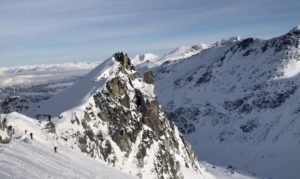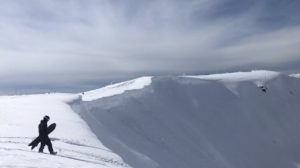Poutine, burgers, chicken fingers, and cold beer—sounds like the lodge menu at your local ski resort, doesn’t it?
There’s no doubt that skiing is hard work; it leaves you ravenous by the end of a day.
Believe it or not, moderate skiing burns well over 500 calories during the course of a ski day. For those charging hard or engaged in backcountry skiing, the calorie burn could be well into the thousands. Cold weather further accelerates calorie burning as your body tries to stay warm.
However, us skiers often become so fixated on finding powder that we forget to nourish our bodies. I’m the absolute worst at this and always forget to drink water. Beer has water, right?
So, what’s the ideal amount to eat and drink during a day of skiing?
Table of Contents
How Many Calories are Needed On Ski Days
Let’s do some basic math (and I can’t believe I said that, I hate math). On average, a person burns 250-600 calories per hour of downhill skiing. Realistically, most skiers might spend only about 2 hours skiing when considering lines, chairlifts, and breaks.
Most adults need about 2,000-3,000 calories a day on average. Add all that skiing exercise, and voila, time for a guilt-free burger and a beer! Well, maybe not.

What You Should Actually Eat While Skiing
Though burgers are delicious, heavy food can make you feel sluggish on the mountain, hampering your skiing experience and performance. My go-to is a bunch of light snacks throughout the day and a protein bar or PB&J for lunch. If you need snack ideas, here are my 10 favorite snacks for skiing.
Between the 2 PB&Js, candy, and nuts in my pocket, I pack in well over 1,000 nearly unnoticeable calories that I consume on the mountain. By refuelling throughout the day, you keep your body energized without feeling bloated or lethargic. Save that lethargy for the end of the day when you’re having a rum and cola fireside.
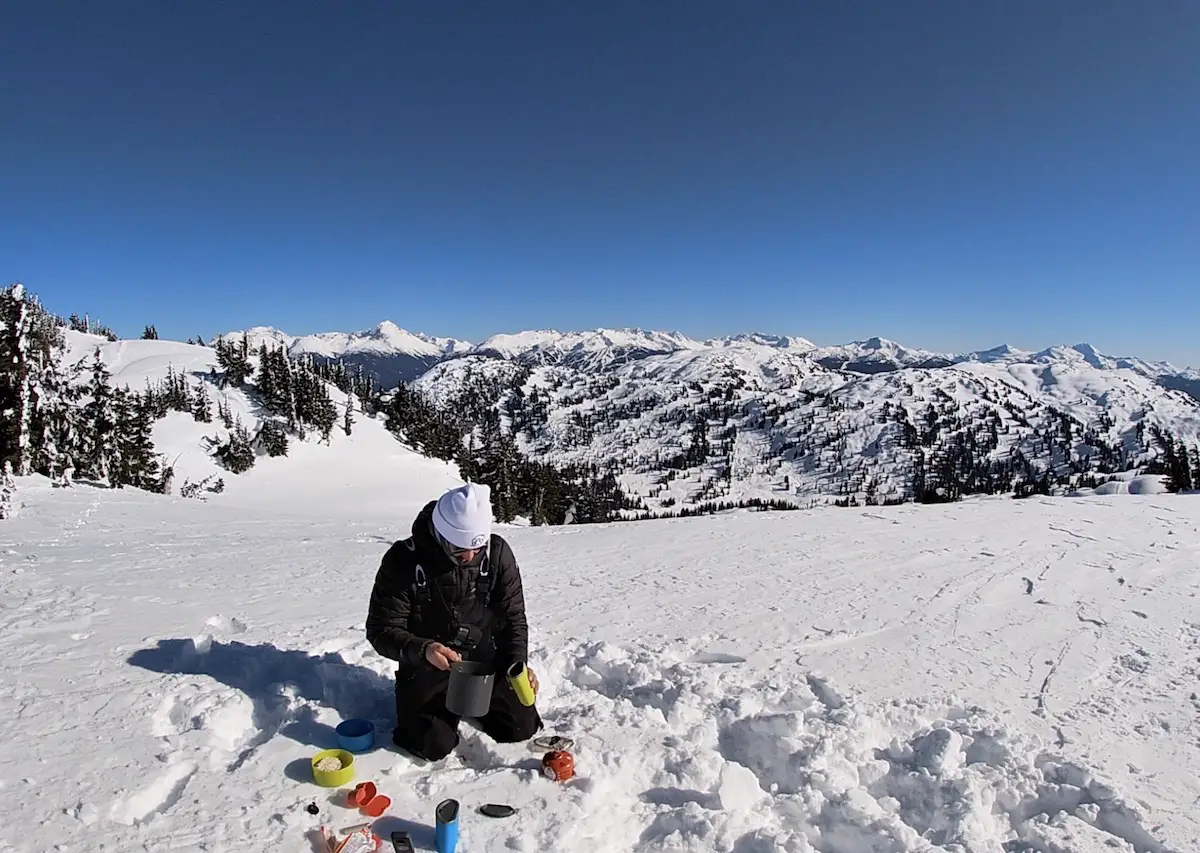

How Much Water To Drink While Skiing
Beer and skiing go together like peanut butter and jam. But don’t forget to hydrate with water. I know you’re cold, and if you’re not exerting yourself much, you probably aren’t feeling thirsty. But your body is working hard on the mountain both to get you down the slopes and to keep your extremities warm.
Ever noticed how dehydrated you feel after a ski day? It’s almost like when you swim for a workout and don’t notice your sweat. Your body needs water, and it uses a lot while you’re skiing and riding.
I hate carrying water unless I’m backcountry skiing—it’s the heaviest. A good rule of thumb is to drink a minimum of 3 liters of water during a ski day. I know this might sound like a lot, but it’s quite easy if you split it up. I always drink a 1-liter bottle on the drive to the mountain with my coffee. This means I’m going to pee a lot, but that’s what tree skiing is for.
I usually eat my snacks, PB&Js, and bars on the lifts. When I feel thirsty, I pop into the lodge for a free glass of water. Typically, I’ll drink two huge glasses of water, and depending on how hard I’m skiing, sometimes I’ll need two water stops per day. Once the ski day is over and I’m back at my truck, I have another liter of water. I keep a big 20L water jug in my truck at all times for easy access.

Eating & Drinking While Backcountry Skiing
The same rules apply for Backcountry skiing but you’re working way harder and climbing uphill on skis, so drink more and eat more. I always drink 1 litre before climbing and carry two with me for the day. Having a solid hydration bladder makes it way easier to drink and carry water. As for snacks, I love snacking while backcountry skiing so I’ll bring whatever I can reasonably fit into my pack.
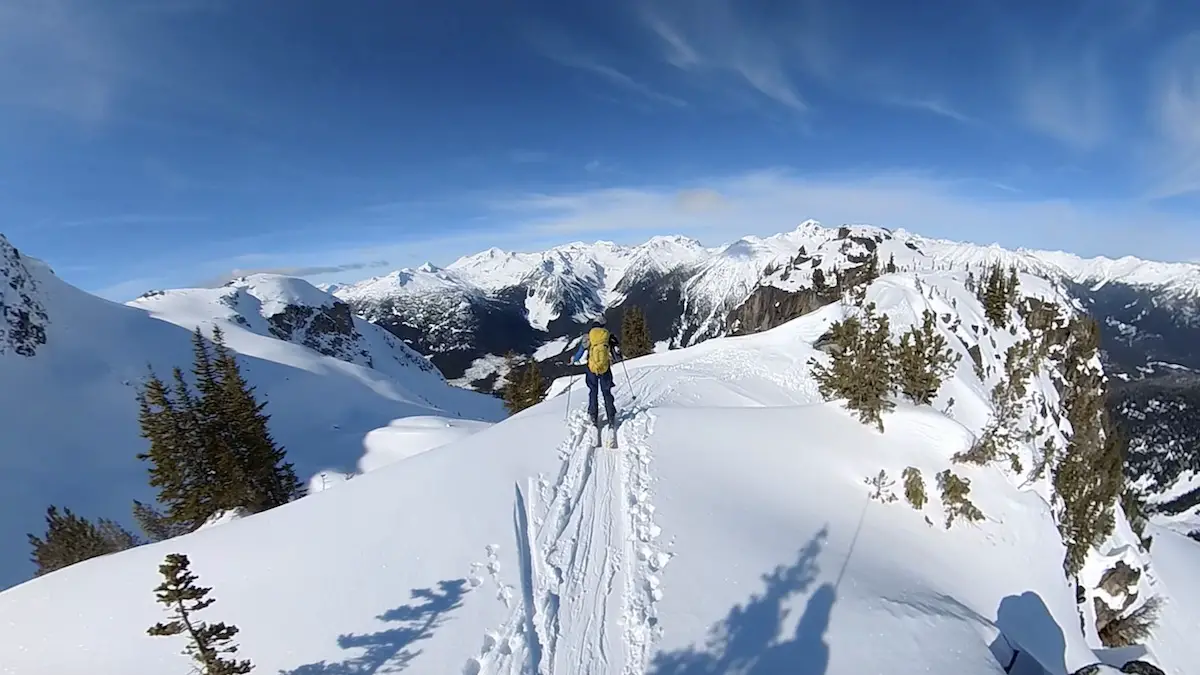
What To Eat at The Après Ski
Once the ski day is over, go crazy! You don’t have to perform anymore, and you’re probably at a calorie deficit, so eat and drink whatever you feel like. My personal favorite is always fries or nachos and a beer. There’s just something about salt and beer or soda after a ski day. If you’re skiing the next day, try not to consume too many pints, since nothing slows you down more than a hangover.

Rest & Recover
Most of us weekend warriors hit the mountain hard on Saturdays and Sundays and have five days to rest in between. If you’re lucky enough to have a flexible schedule, don’t forget to mix in the occasional rest day—your body will thank you in the long run. Eating well on rest days is essential, and perhaps avoid going all out after every ski day; it’s tough to charge hard when your stomach is dragging in the snow.
Stay Spicy!


